Food Review: Sushi Hare At Stanley Street | One Of The Best Japanese Omakase Restaurants In Singapore
The Place In the sea of Japanese omakase restaurants in Singapore, Sushi Hare stands out for me. Located along Stanley Street, the 10-seater Sushi Hare is understated from the design of its entrance, but it literally beacons the moment I entered the space from the striking luminous ‘sun’ at its reception. It is a minimalist and traditional Japanese interior where the restaurant is helmed by Taiwanese-born chef, Angus Chang, where the word Hare (晴) refers to clear skies.
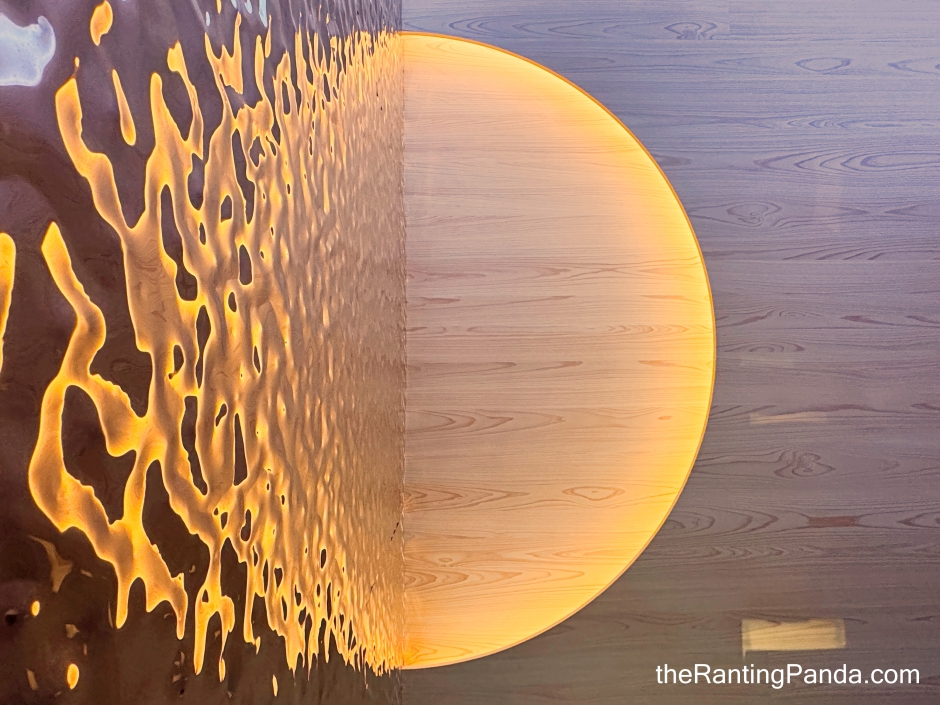
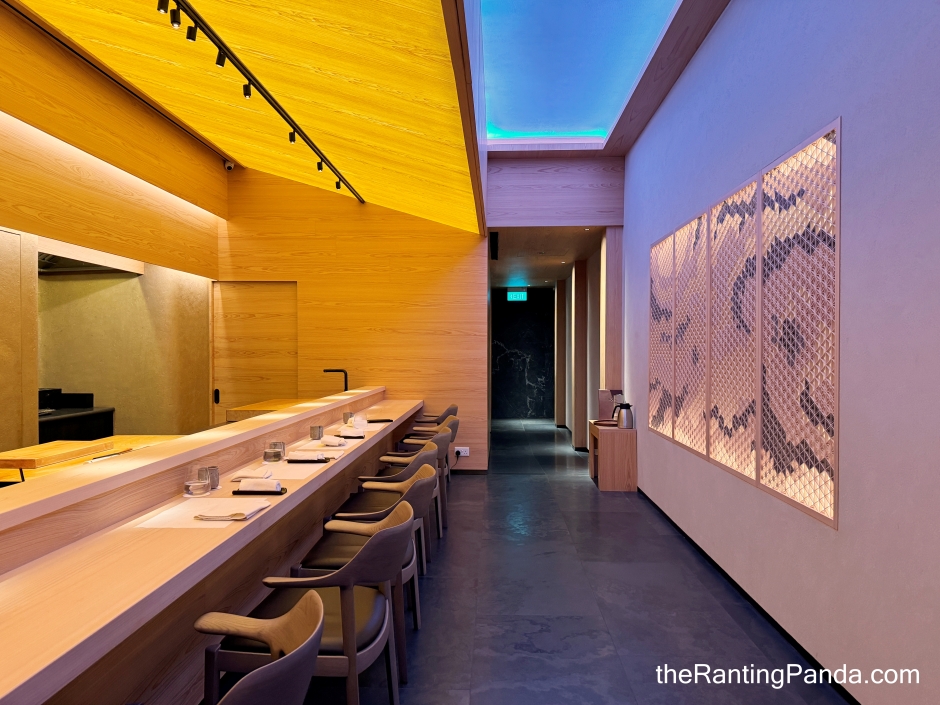
The hinoki-top sushi counter is spacious and there is ample space to place your belongings and enjoy a comfortable meal while watching Chef Angus at work in the open kitchen concept. Chef Angus is attentive and friendly throughout the meal, and he is guided by the ethos of Japanese perfection known as Shokunin (職人); as well as the spirit of Ren qing wei (人情味).


The Food The Hi 日 lunch set menu is at S$250 per guest while the dinner Ao ⻘ set menu is priced at S$380 per guest for 16-courses. There is also a Hare 晴 set menu from S$500 per guest which requires one-week advanced order. I must say each course is quite complex on its own in terms of preparation, and I also appreciate the great lengths Chef Angus goes in terms of what he uses such as the rice from Yamagata, water from Hokkaido, five types of vinegar to marry and make different shari or sushi rice, and top-grade soy sauce aged in a wooden barrel, just to name a few.

Here is what to expect from the 16-courses Ao ⻘ dinner menu I had:
Botan Ebi (Botan Shrimp)
The first course is already a treat! You get Botan ebi sashimi topped with caviar and Ensui uni. One part of the ebi is served raw and topped with caviar, while the other is lightly grilled over binchotan and topped with Hokkaido ensui uni. Needless to say, I enjoyed both combinations as the flavour of the ebi is very fresh.

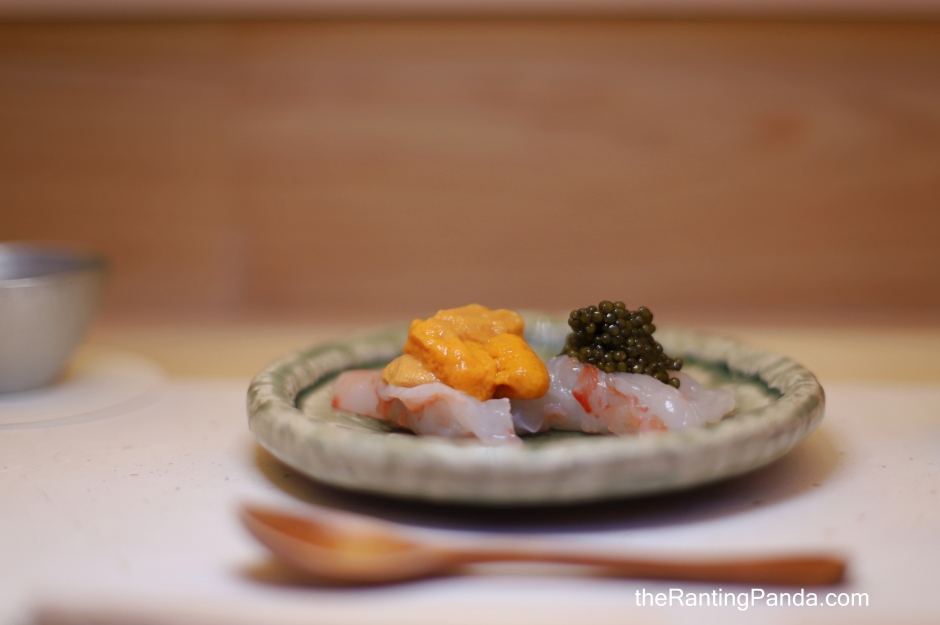
Iwashi (Sardine)
Not a typical showcase of Iwashi (sardine) as the Iwashi here is wrapped with shiso leaves, ginger, spring onions, and nori seaweed which help to balance the heavy flavour profile of the sardine.
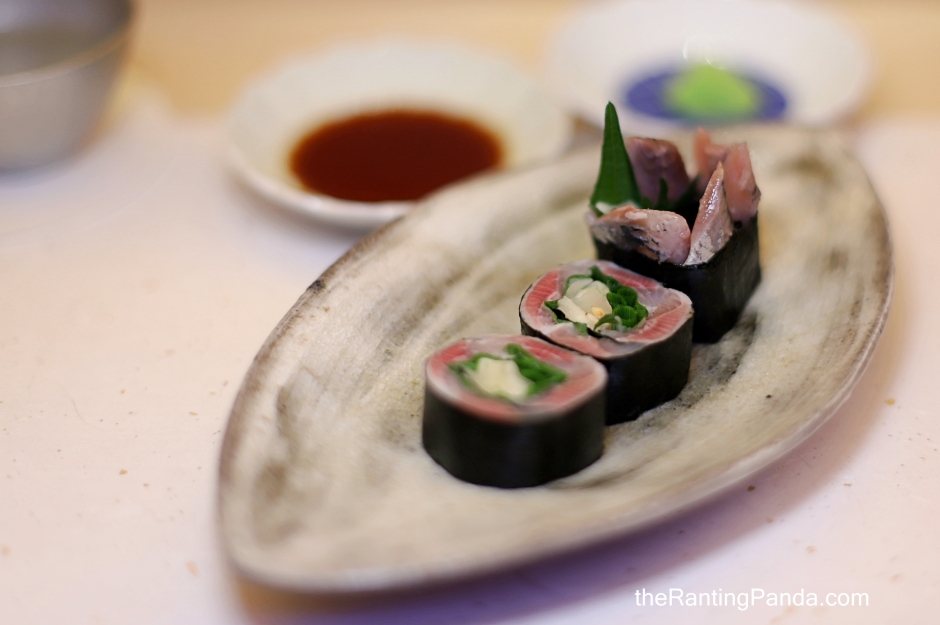
Kegani (Horsehair Crab)
I guess dashi jelly and fresh crab meat work really well for me as shown in this course. The steamed Hokkaido Kegani is served with a refreshing house-made dashi jelly and topped with crab roe.
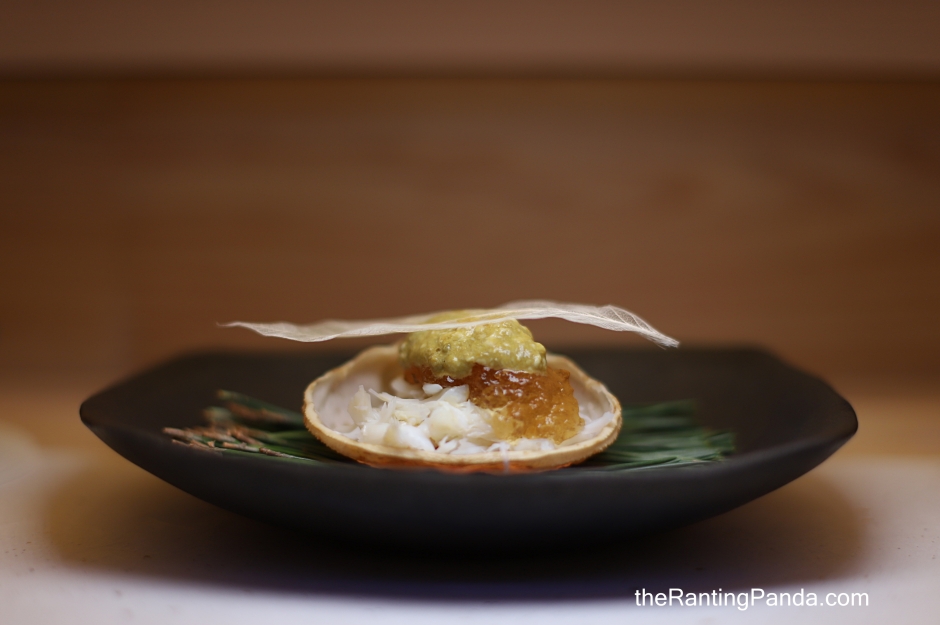
Chutoro Noodles (Medium Fatty Tuna)
My first time having Chutoro in a tsukemen style. This creative course features Chutoro strips from Nagasaki is served with a dipping sauce of konbu-marinated soy sauce, Hokkaido Bafun uni, and roasted nori strips.
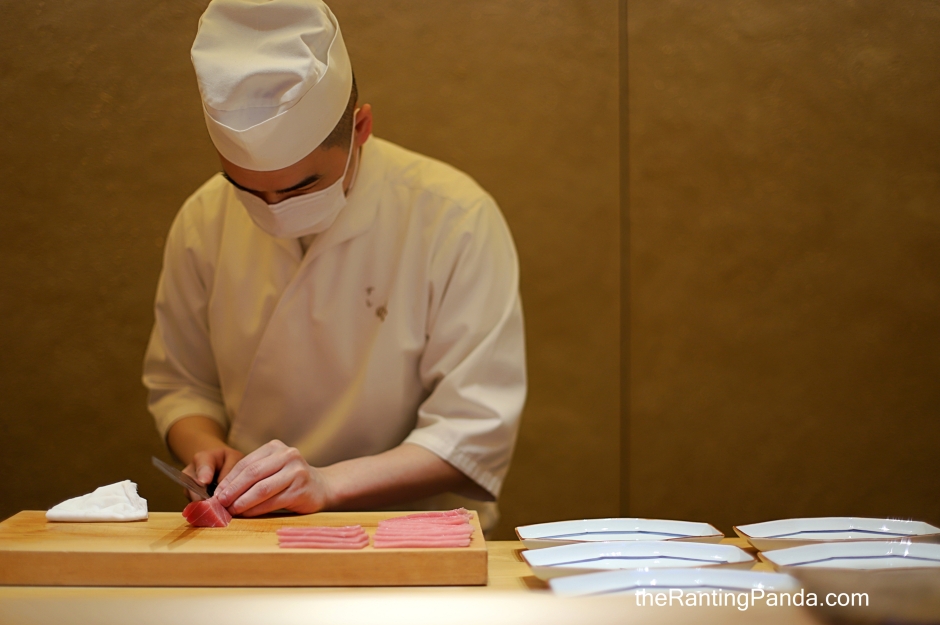
Treat the sliced Chutoro as noodles and dip it into the sauce and have it, delicious! A case of displaying creativity without being gimmicky.


On to the first nigiri course, special mention goes to Chef Angus’s Shari (vinegared sushi rice) where two types of shari are prepared at Sushi Hare to complement the different neta (toppings). The white vinegared sushi rice is made from two types of white vinegars, while the red vinegared sushi rice is made from three types of aged red vinegars. Yamaroku Tsuru-bishio soy sauce is used here, and this particular soy sauce is laborious to make with less than 1% of soy sauce is made with this method in Japan currently.

Shiro Ika (Cuttlefish)
The first nigiri is a very clean and fresh taste of Shiro ika over white vinegared shari.
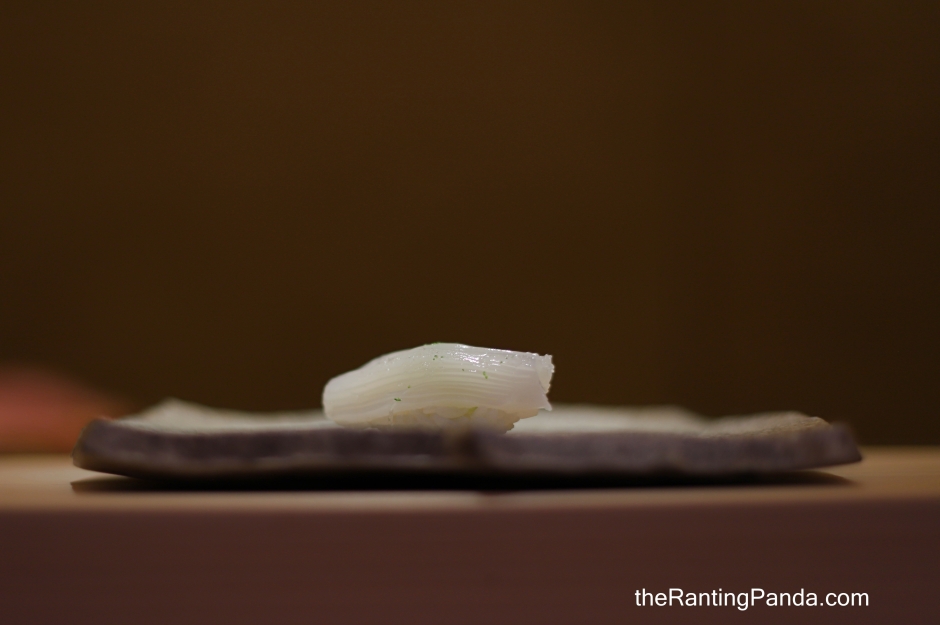
Hokkigai (Surf Clam)
The Hokkigai is sliced and moulded over white vinegared sushi rice before being brushed with soy sauce.

Shima Aji (Striped Jack)
What’s unique here is that the Shima Aji (Striped Jack) from Kochi prefecture is sliced into three thin slices over red vinegared shari. This gives the texture of the nigiri a smoother mouthfeel.
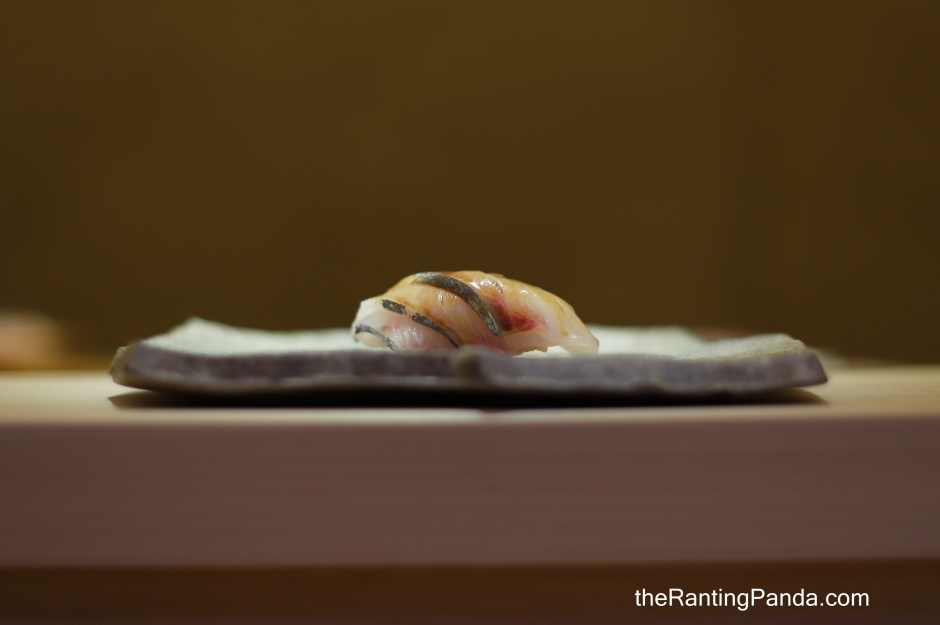
Kinmedai
Kinmedai is thinly sliced and lightly seared.
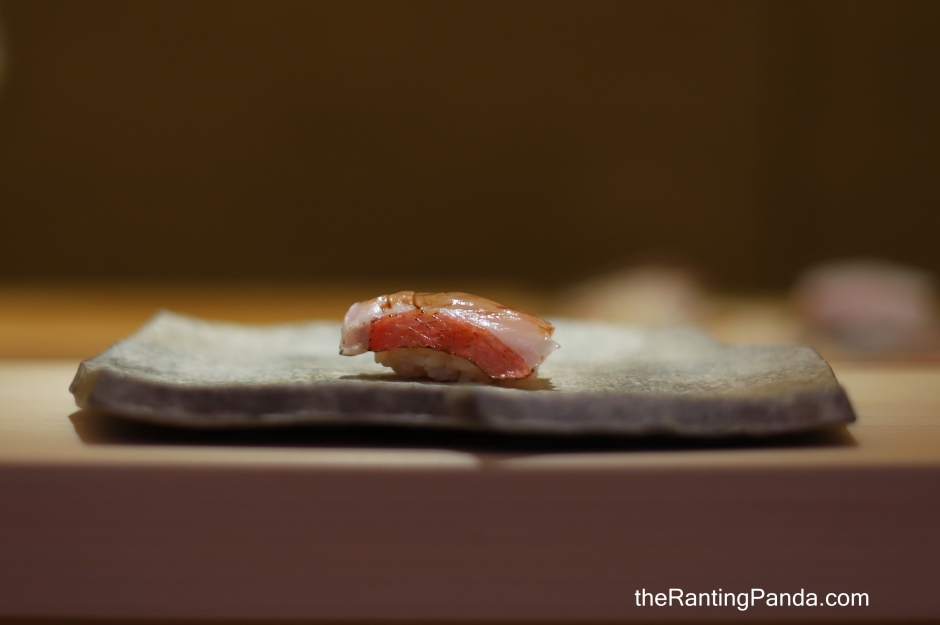
Beltfish
Beltfish from Chiba is grilled over binchotan then smoked.
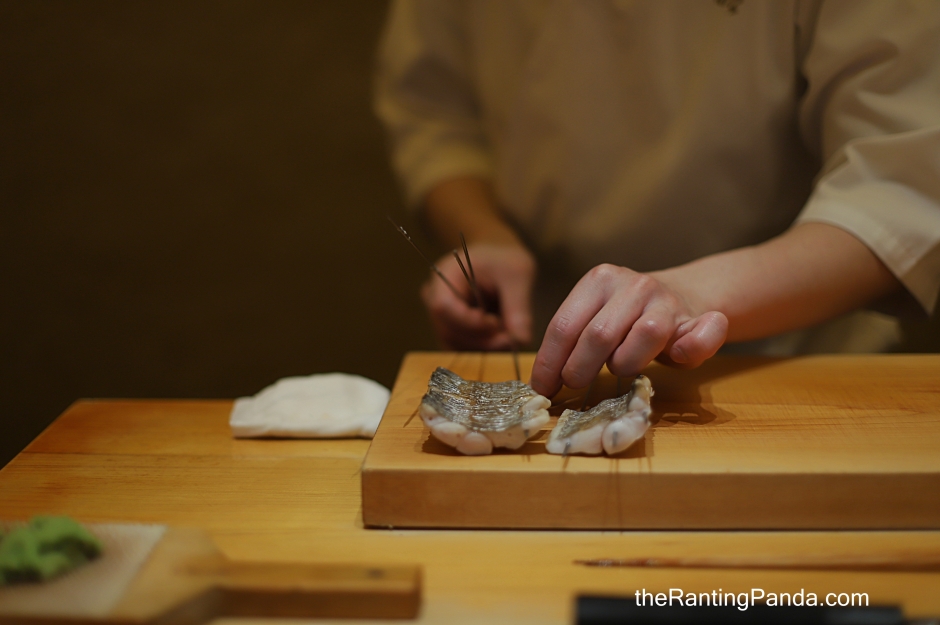
Yuzu juice is lightly squeezed over the grilled fish, then wrapped in nori seaweed together with red vinegared sushi rice.

Shiro Ebi (Baby White Shrimp)
This is one of my favourite courses. Shiro ebi (Baby White Shrimps) from Toyama is peeled and dried with layers of cedar wood sheets to preserve its moisture. The shrimps are served with Bafun uni from Hokkaido atop white vinegared sushi rice. You get a nice and distinct contrast of the flavours of the uni and ebi here.

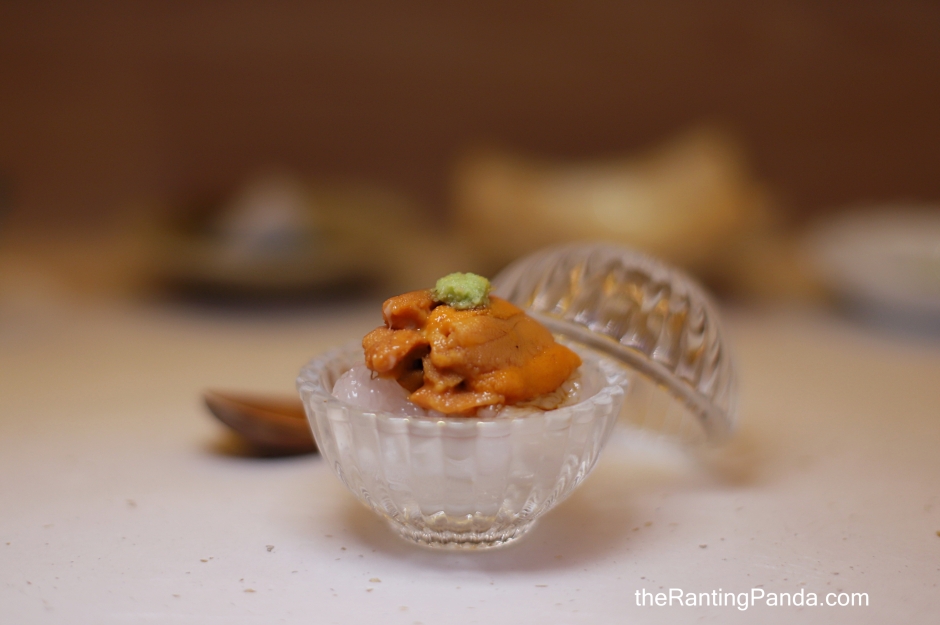
Hotaru Ika (Firefly Squid)
This course is inspired from Chef Angus Taiwanese heritage as it pays homage to a bowl of Taiwanese Lu Rou Fan (滷肉飯). The Hotaru Ika or firefly squid is grilled over binchotan and wara straw for a slight smokiness and is then placed atop white vinegared rice which has been stuffed in grilled Botan Ebi prawn heads. The rice is expectedly full of umami and topped with finely chopped spring onions and soy sauce.
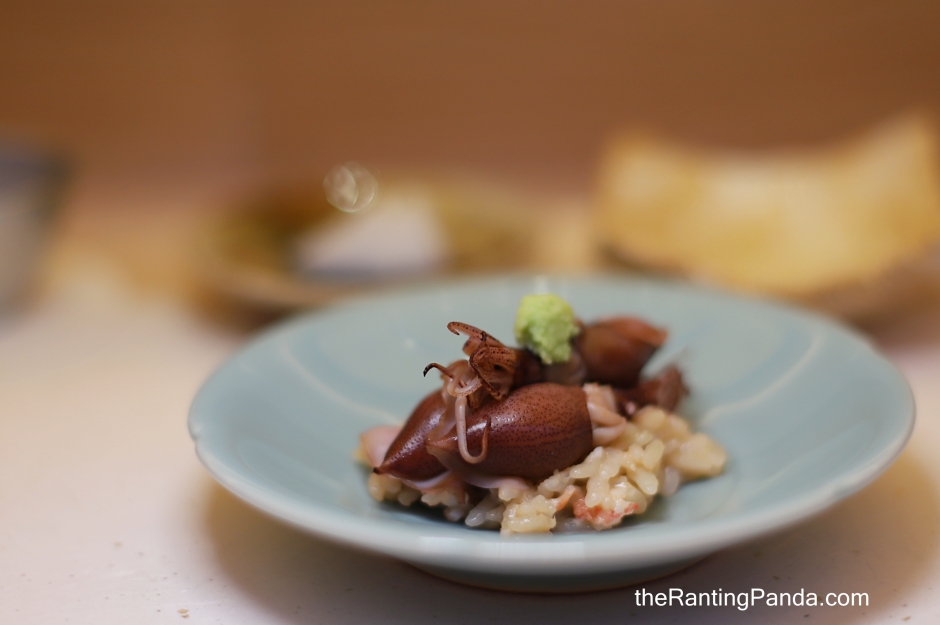
Ebi imo (Shrimp-shaped Taro)
Ebi Imo is served in an ankake sauce of kegani (Horsehair Crab) and gingko nut, topped with finely chopped spring onions. You get the slightly crisp texture of the deep-fried Ebi Imo.

Kamatoro (Tuna Cheek)
Another of my favourite courses here is this Kamatoro (Tuna Cheek) from Nagasaki. It is wet aged for a week to soften the tendons and is sliced at the start of the meal to bring up its temperature.

The fatty dish is sliced thinner in three slivers and moulded over warm red vinegared sushi rice to let the fat melt into the rice.

Ankimo (Monkfish Liver)
Every course just gets better and this ankimo really melts in the mouth. It is topped over red vinegared shari mixed with cooked ankimo and finely chopped spring onions.

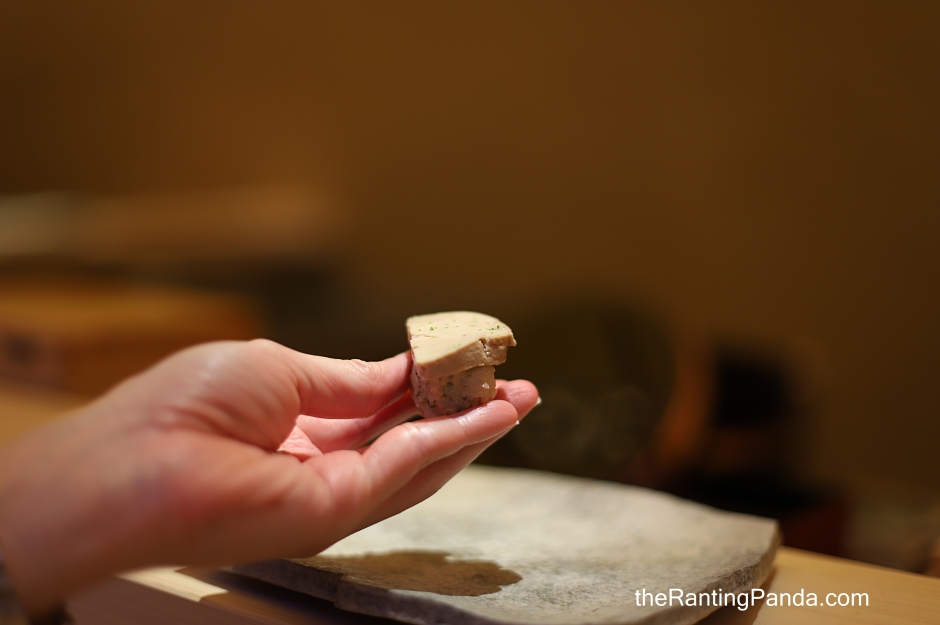
Nodoguro (Blackthroat Seaperch)
One of my favourite fishes and this did not disappoint. The Nodoguro from Nagasaki is grilled over binchotan until 70% cooked and is moulded over white vinegared rice and topped with grated ginger and spring onions. It is expectedly flavourful and juicy.
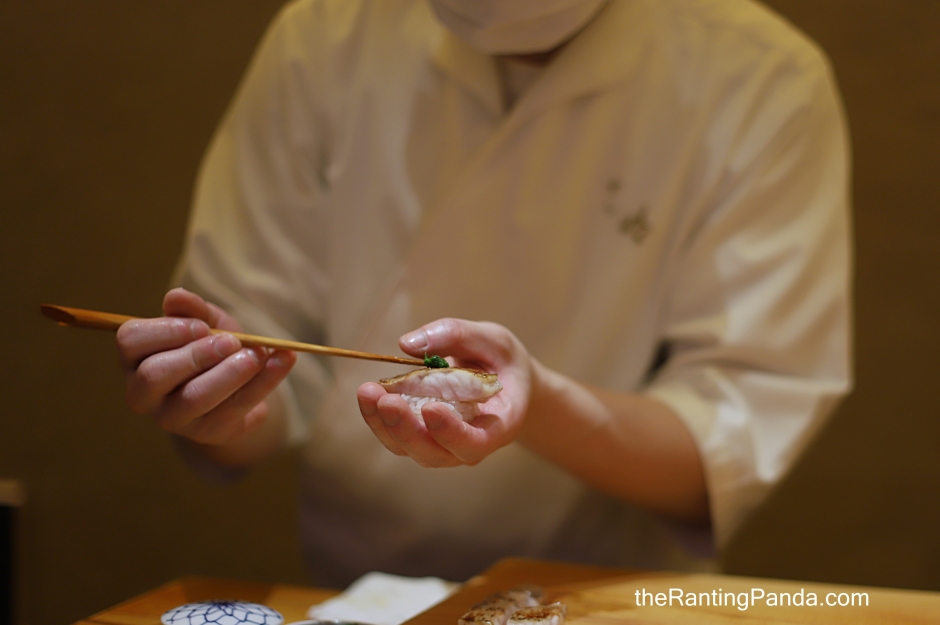
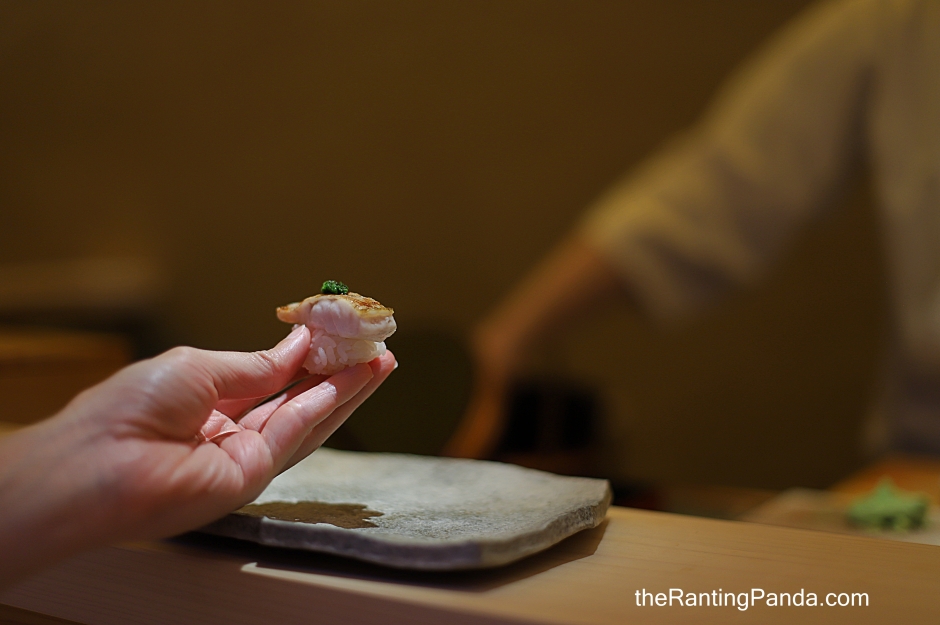
Negitoro (Minced Tuna)
Most Negitoro course feels like a consolation towards the end of an omakase, but I really enjoyed this version. The scraped tuna meat is mixed with spring onions, leeks, and pickled yellow radish, then wrapped with red vinegared sushi rice and nori seaweed, then topped with more of the tuna meat.
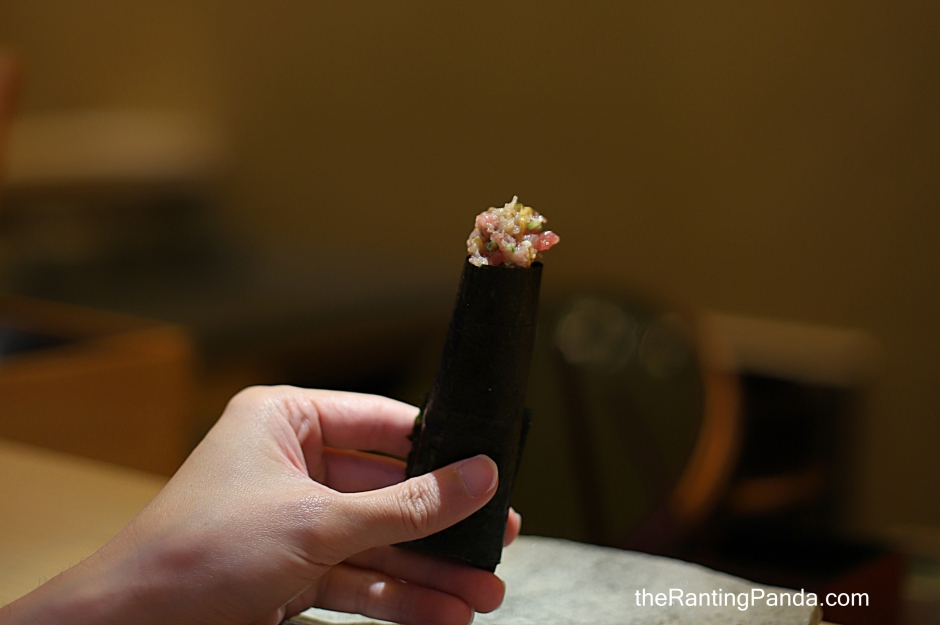
Tamagoyaki
Last but not least, the last savoury course is the delicious baked castella style egg where the Japanese eggs here are mixed with Hokkaido amaebi (sweet shrimp) along with sake and sugar. Love that soft fluffy texture and it is a burst of subtle flavours.
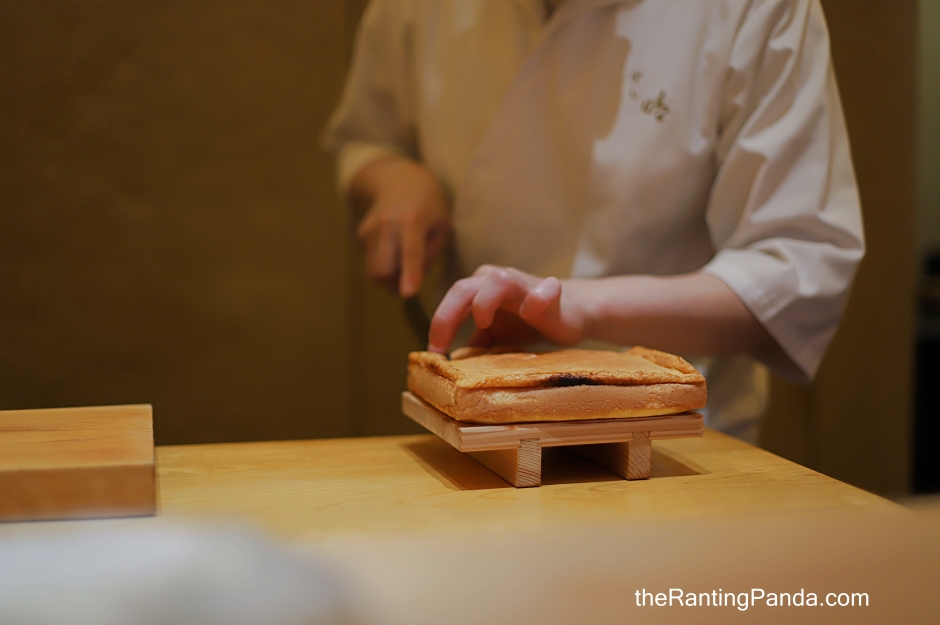
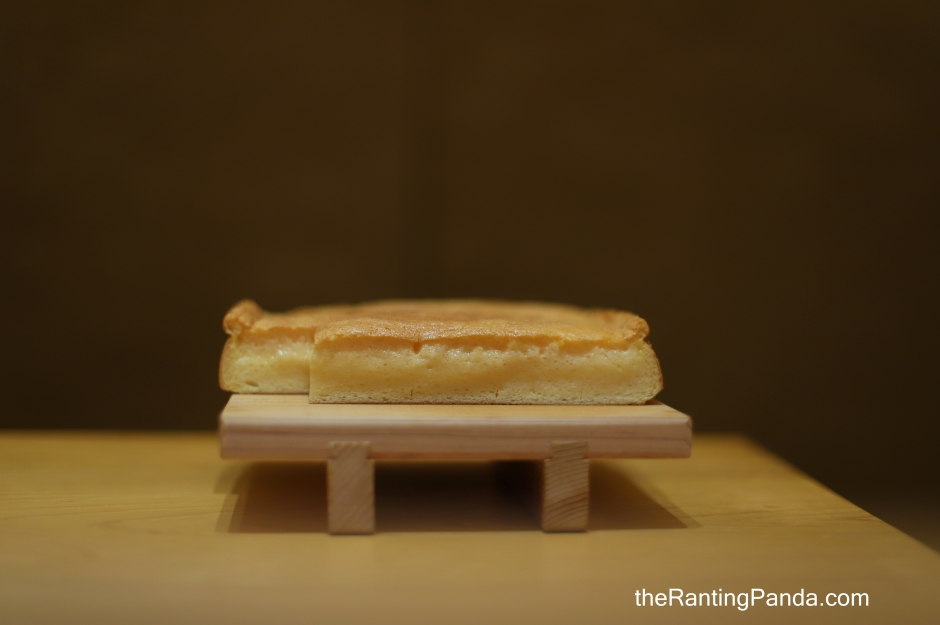
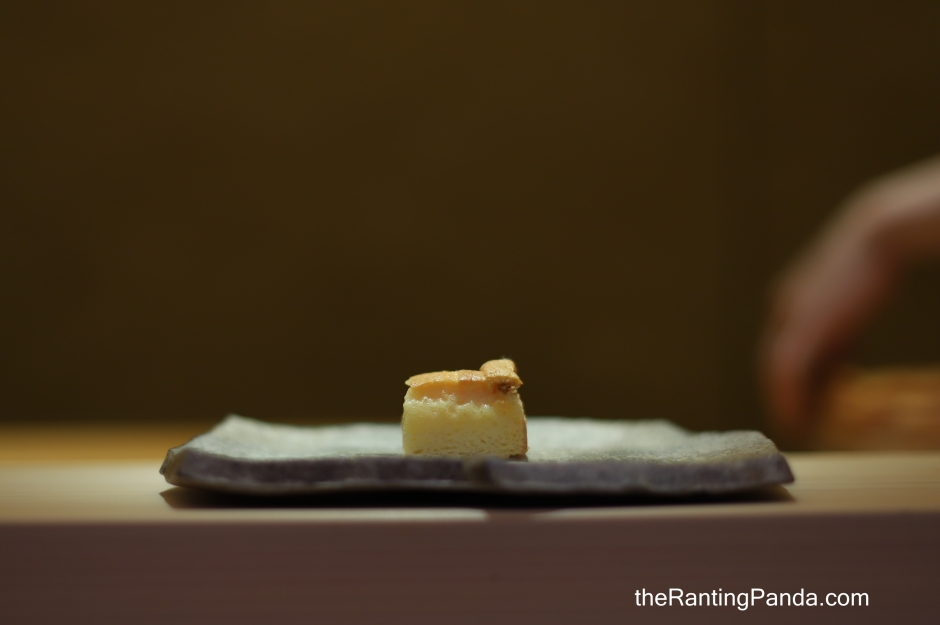
Miso Soup
Next up was a much need comforting soup of shiro (white) miso and aka (red) miso simmered with katsuobushi. There are also slices of yuba skin and spring onions within.

Seasonal Japanese Fruits
There is nothing more I need at the end of the meal other than some fresh fruits. I love my musk melon from Shizuoka and strawberry from Fukuoka.
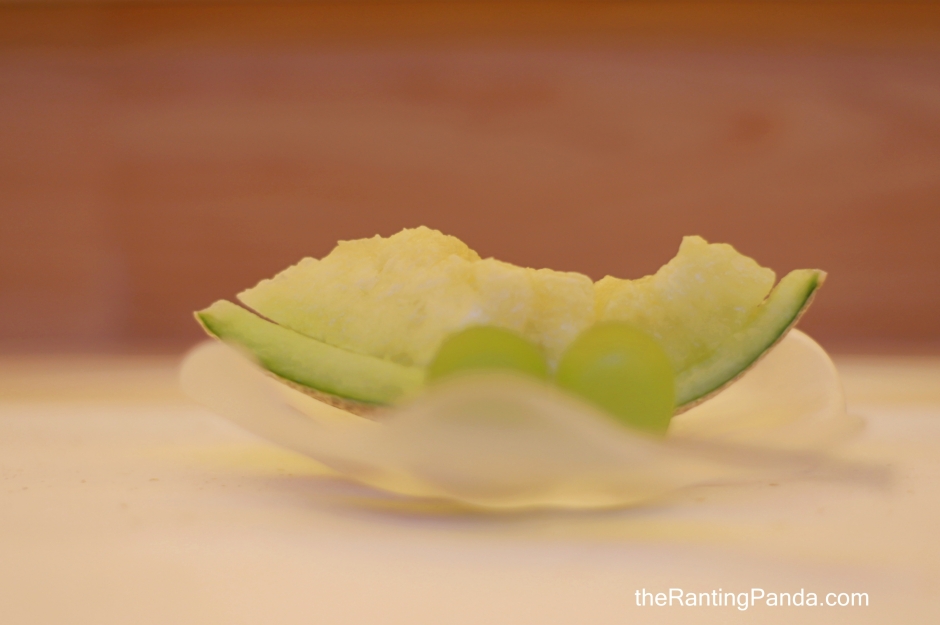
Rants The dinner menu at S$380++ is quite steep in price. It will definitely be welcoming if a more concise dinner menu is introduced.
Will I Return Again? I had a great experience at Sushi Hare, and I think the best part for me is that there are many signature items of Chef Angus which I do not come across in other Japanese omakase concepts. Not to mention that I enjoyed the shari here thoroughly, one of the best versions I had in Singapore. Chef Angus is personable himself, and I think that elevates the dining experience where the ambience is not too stiff. This is easily one of my most memorable Japanese omakase meals in Singapore.
This was an invited tasting, though all opinions expressed are our own.
TheRantingPanda says:
Taste bud: 4.5/5
Hole in the pocket: 4.5/5
Ambience: 4/5
Overall Experience: 4.5/5
Sushi Hare
14 Stanley Street
Singapore 068733
Tel: +65 9737 0113
Opening Hours
Tuesday to Sunday: 12pm to 3pm; 6pm to 10pm
Closed on Monday
Ranted by The Ranter
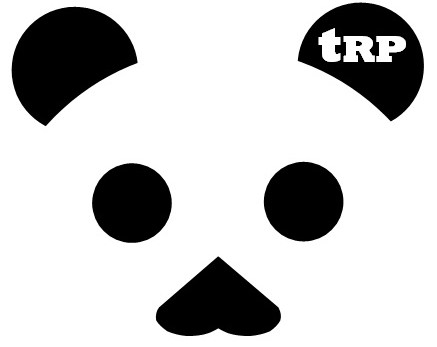


Rant here!